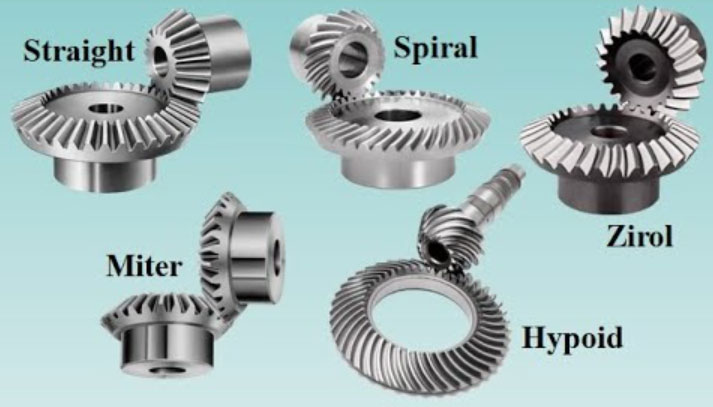Bevel gear design and manufacturing pose several challenges and limitations that engineers and manufacturers need to consider. These challenges can impact the performance, efficiency, and reliability of bevel gears. Here are some key limitations and challenges in bevel gear design and manufacturing:

- Complexity of Tooth Geometry: Bevel gears have complex tooth geometry, particularly spiral and hypoid gears. Designing and manufacturing precise tooth profiles with accurate tooth contact patterns can be challenging. The shape and alignment of the gear teeth significantly affect gear performance, load distribution, and noise characteristics.
- Tooth Contact and Alignment: Achieving proper tooth contact and alignment is crucial for efficient power transmission. Bevel gears require accurate alignment to ensure smooth and even tooth engagement. Misalignments can lead to increased friction, wear, noise, and reduced gear life. Specialized alignment tools and techniques are often necessary to align bevel gear systems accurately.
- Manufacturing Precision: The manufacturing process for bevel gears requires high precision and expertise. Achieving the required gear accuracy, tooth profile, and surface finish can be challenging. Factors such as gear cutting, grinding, heat treatment, and inspection require careful control to maintain the desired gear quality. Small deviations in gear geometry can lead to increased noise, reduced efficiency, and premature failure.
- Assembly and Alignment Complexity: Assembling and aligning bevel gear systems can be complex, especially for gears with multiple axes and intricate geometries. Ensuring proper meshing, backlash control, and alignment of the gears require skilled technicians and specialized equipment. Improper assembly or misalignment can result in reduced efficiency, increased wear, and premature failure.
- Noise and Vibration: Bevel gears can generate significant noise and vibration during operation, particularly in high-speed applications. The complex tooth engagement and non-uniform loading can contribute to gear noise and vibration. Managing noise and vibration requires careful design considerations, tooth profile optimization, surface treatments, and noise reduction techniques.
- Lubrication Challenges: Bevel gears operate under high loads and sliding velocities, requiring effective lubrication to minimize friction, wear, and heat generation. Proper lubrication distribution to all contact surfaces in the gear system can be challenging due to the gear geometry and oil flow patterns. Improper lubrication can result in increased friction, overheating, and accelerated wear.
- Misalignment and Axial Loads: Bevel gears are sensitive to misalignments and axial loads. Misalignments can cause uneven load distribution and increased stress concentration on specific teeth, leading to premature failure. Axial loads, such as thrust forces, can affect gear performance and contact patterns. Proper consideration of misalignments and axial loads is crucial during the design and operation of bevel gear systems.
- Limited Gear Ratios: Bevel gears have limitations on achievable gear ratios compared to other gear types like helical gears. The selection of gear ratios is constrained by the available tooth profiles and gear geometry. Achieving specific gear ratios may require custom gear designs or the combination of multiple gears.
Overcoming these limitations and challenges in bevel gear design and manufacturing requires a combination of engineering expertise, advanced manufacturing technologies, and rigorous quality control processes. Collaboration between design engineers and gear manufacturers is essential to address these challenges and optimize bevel gear performance, efficiency, and reliability.
